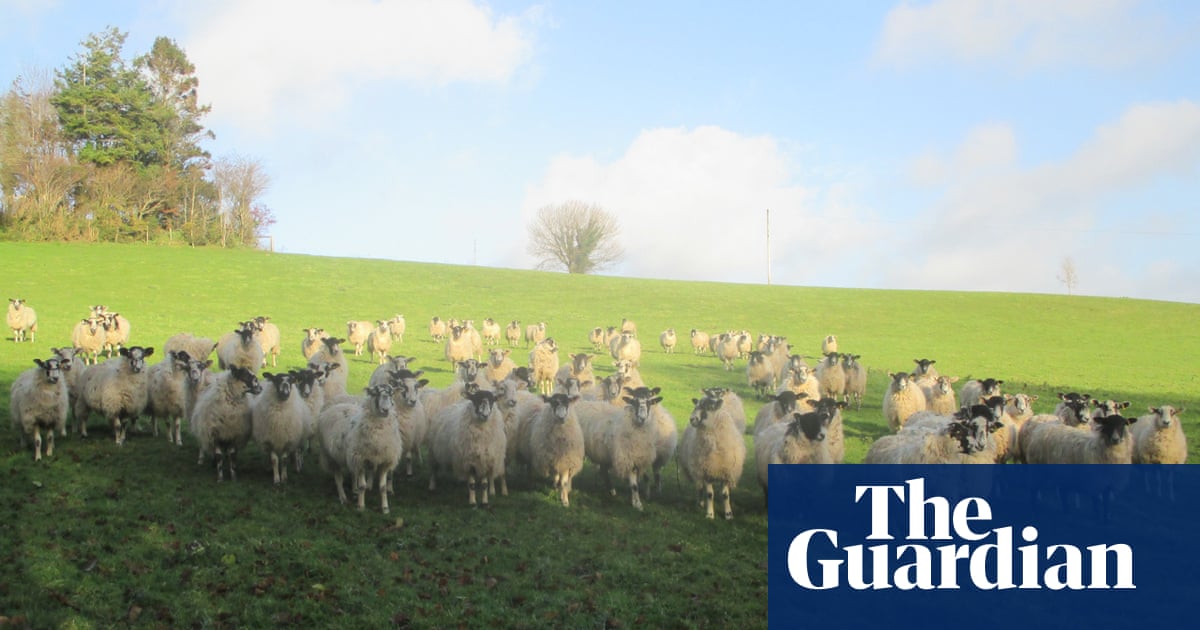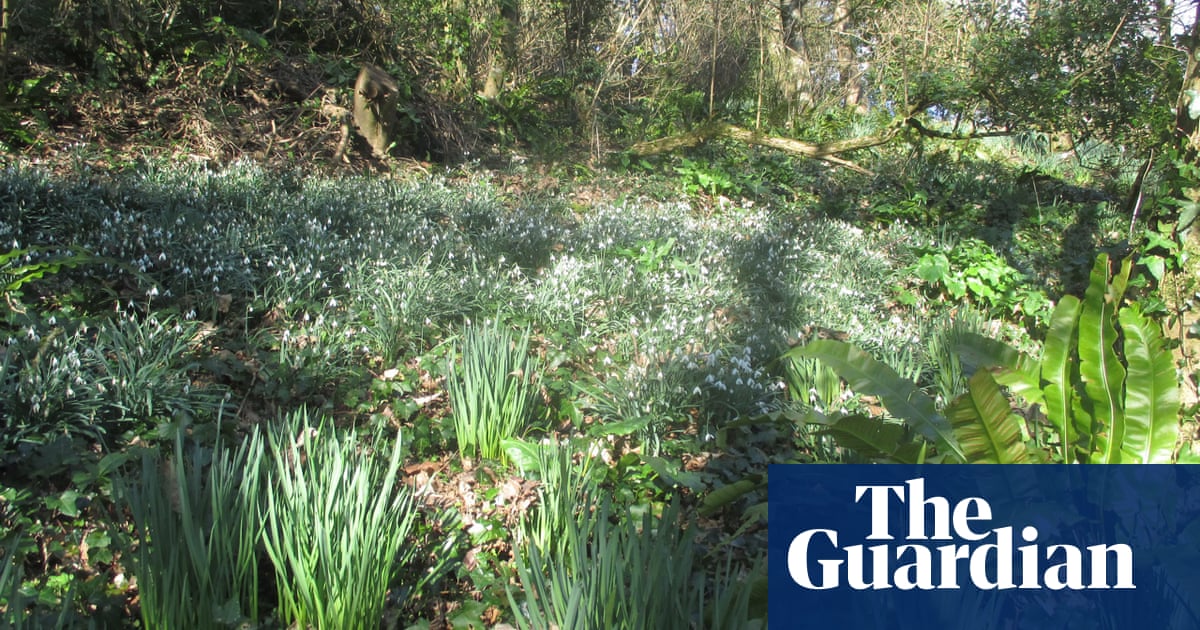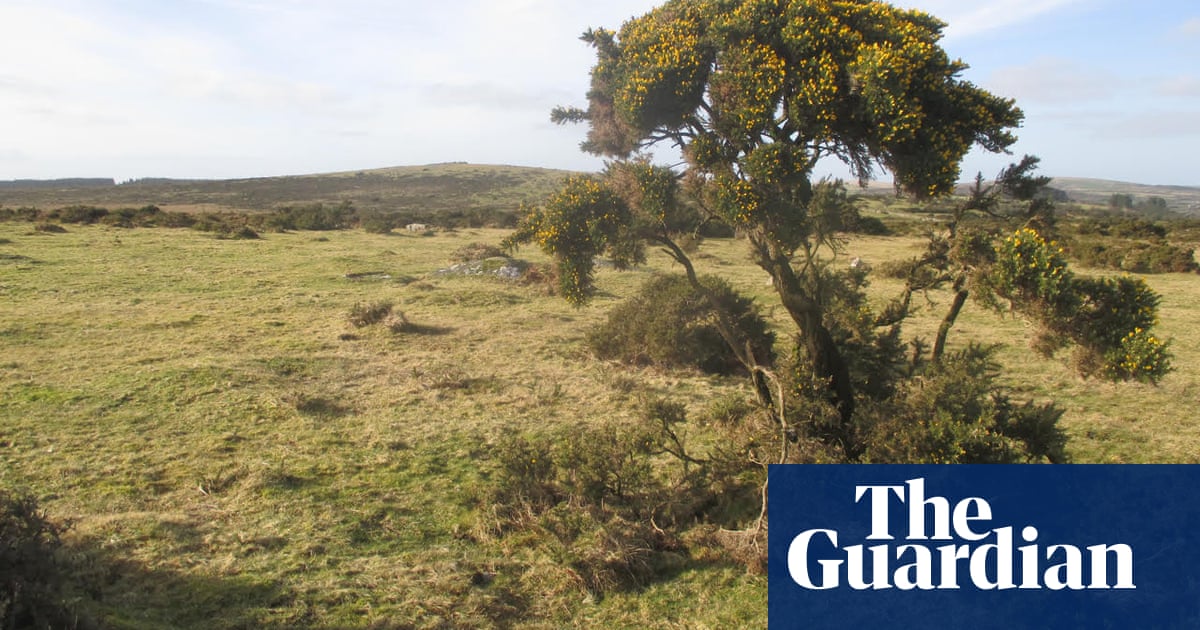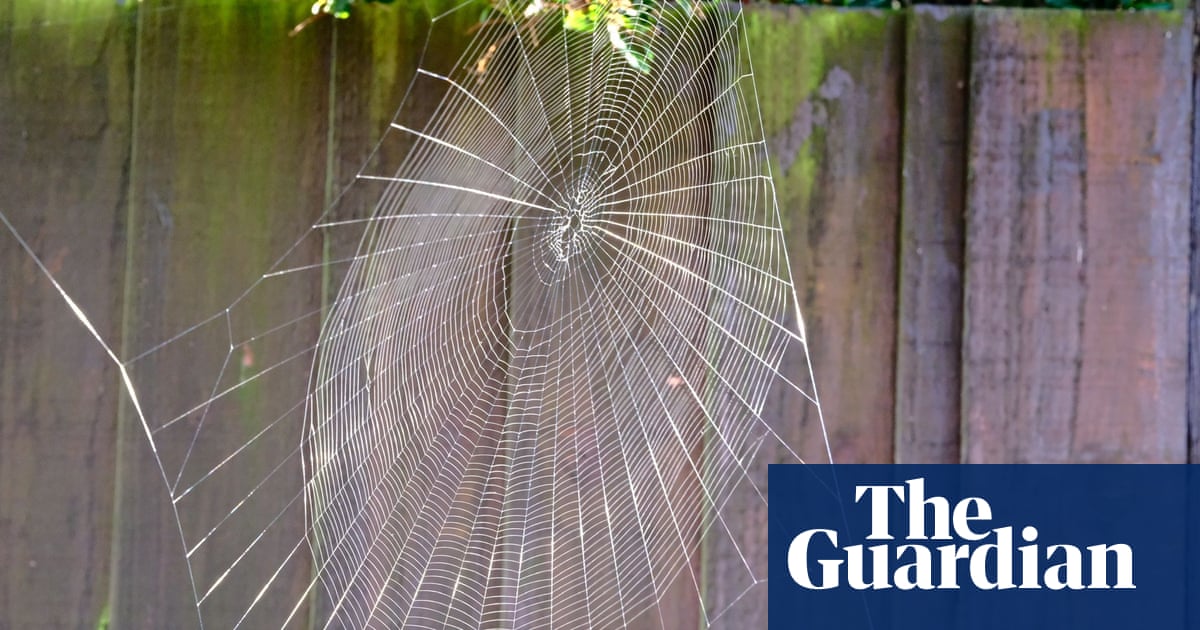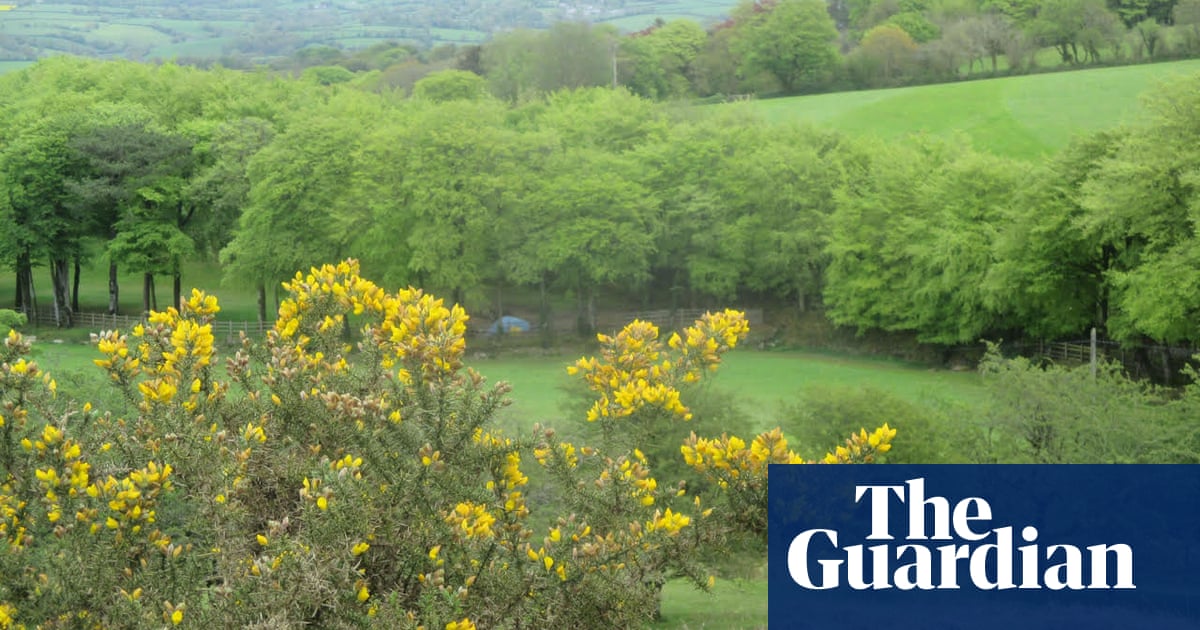
Below Caradon Hill, the fresh, diaphanous leaves of tall beeches hide Tokenbury Manor, and a green panorama extends across the Lynher Valley towards Kit Hill (near home) and beyond, to the skyline of misty Dartmoor.
Patches of sunlight gleam across this predominantly pastoral land with rare enclaves of lurid oilseed rape, and fewer fields of plastic-covered maize than in previous years. Lambs and their attendant ewes scatter across the hill’s stony rough grazing; bracken emerges through last year’s flattened brown fronds, and turf flushes pale green. Gnarled gorse trees dazzle with yellow flowers and lichen-draped thorns will soon burst into bloom.
Encircling the hill, a path follows an old railway, part of a sinuous network that, in the 19th century, carried ore and granite downhill towards Moorswater near Liskeard and then onwards by canal, superseded by a railway, to Looe harbour. On this cool, hazy May morning, a cuckoo – the first of the year – sounds from higher up the open hill; following family tradition we run about to ensure another year of liveliness!
Then, around a bend, we hear that rare call again, carrying uphill from the overgrown Marke Valley (once intensively mined and linked to this railway); northwards is the wooded top of outlying Notter Tor and the stark rocks of Sharp Tor. Then comes the village of Minions (almost 1,000ft above sea level) set in this world heritage mining landscape, close to the prehistoric stone circles of the Hurlers and overlooked by the Cheesewring.
Southward, granite sleepers, once fixed with rails, mark the way into Gonamena Valley; on either side of the little stream (source of the River Seaton) are tower dumps of waste, excavated from South Caradon mine, producing copper ore until closure in 1885 – no sound or sight now of the clanking machinery, steam engines and crowds of surface workers breaking and washing the ore.
Birds sing within leafy thickets of willow, thorn and brilliant gorse growing across the hummocky bottom. Ruinous chimneys and engine houses protrude through regenerating trees and, from the canopy of oak catkins, comes the mellifluous song of willow warblers.






